The Green Bird Flower (Crotalaria cunninghamii) gets its name from the green bird-shaped flowers and is named after the the 19th century botanist Allan Cunningham. Crotalaria comes from the Greek-Latin word meaning a rattle or castanet.
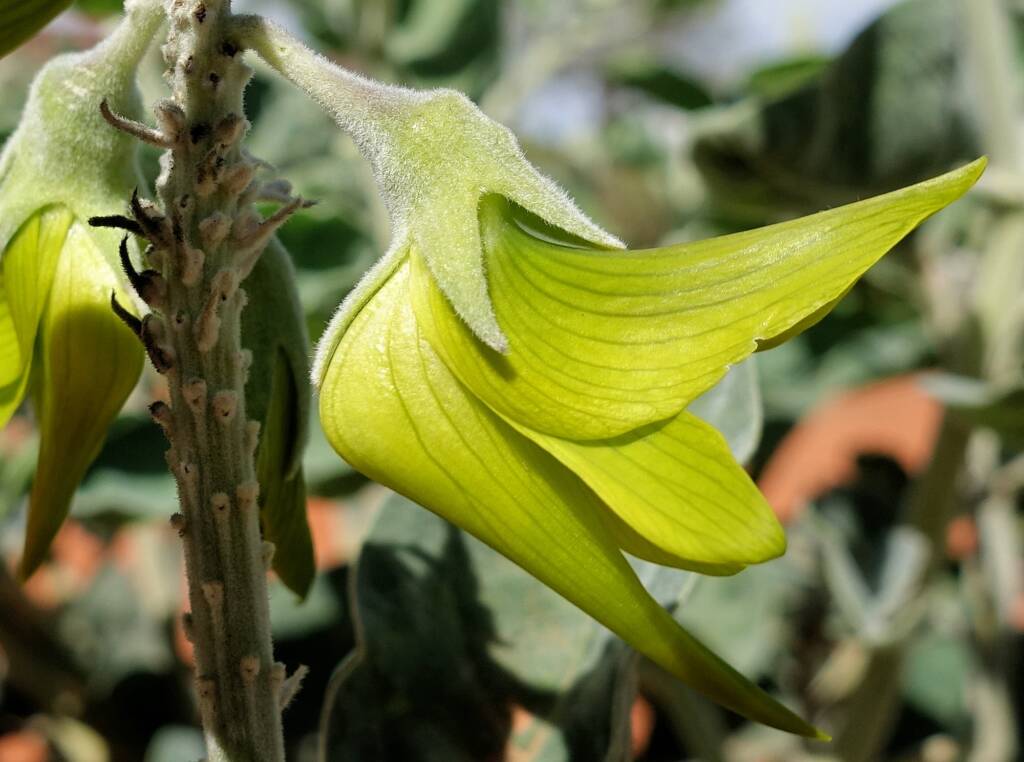
Crotalaria cunninghamii is an native plant found growing in the inland northern parts of Australia. It can be found growing in spinifex, sandplains and sand hill / sand dune country. The plant is known to be eaten away by wild camels. Certain species of birds are also known to feast on the seeds, including the Australian Ringneck.
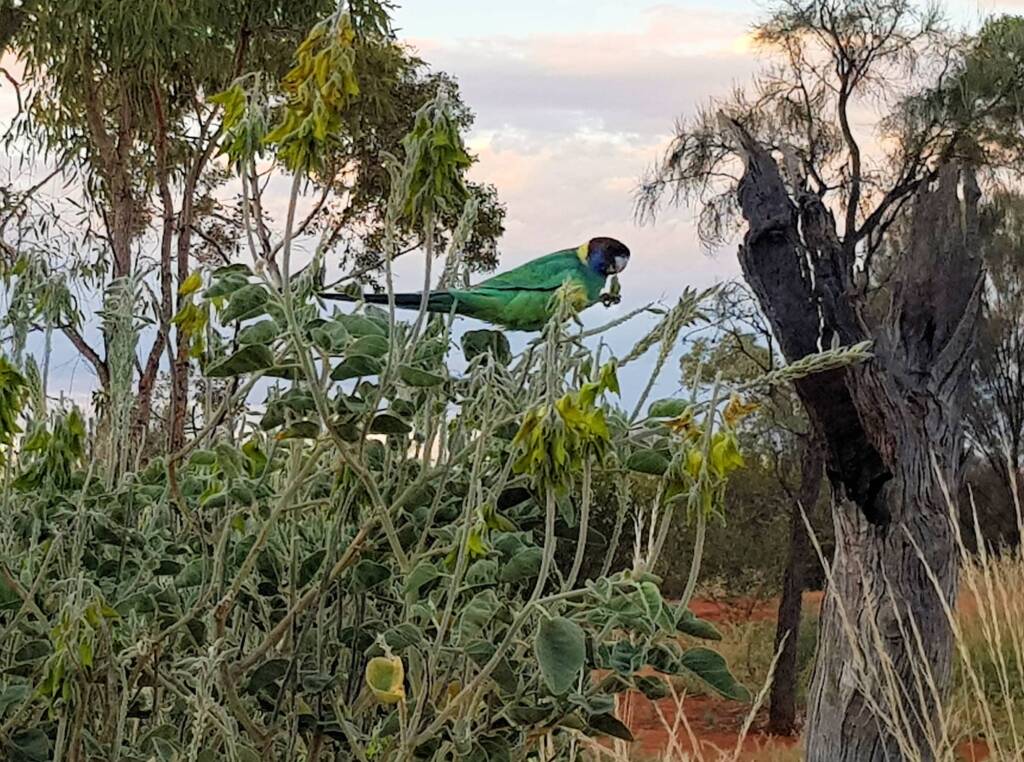
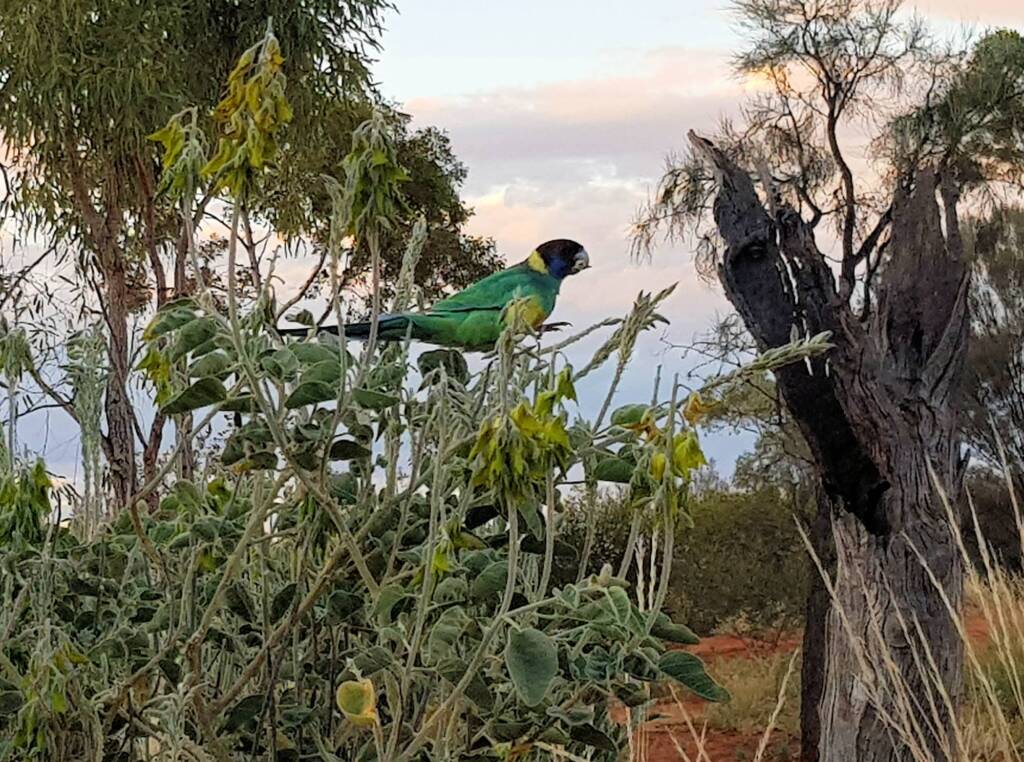

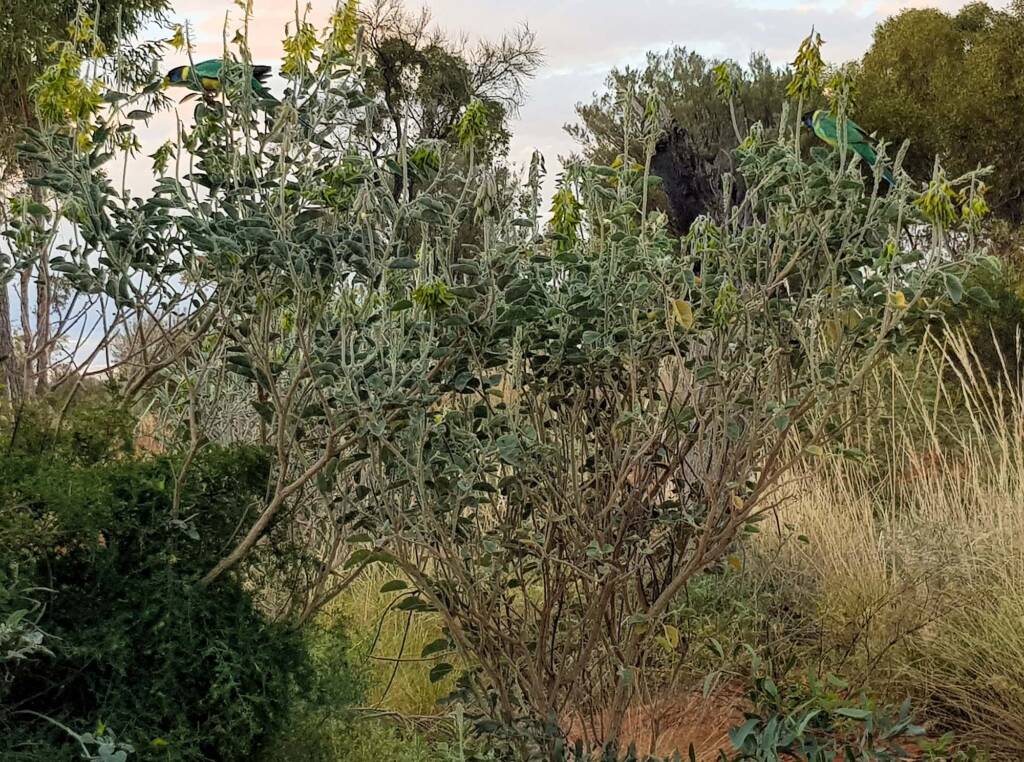
The flower has a beaked keel that is longer than the wing petals. As well as being notable for the large greenish yellow pea flowers, the plant also has large pods. When the seed pods are mature, they make a rattling sound when shaken. The plant has a number of uses by the aboriginal people. The Pintupi people would use the fibrous bark of the plant to make bark sandals (palykanpa in Pintupi, Pitjantjatjara), whilst other Aboriginal groups have used it in bush medicine1.
Common name
Green Bird Flower, Regal Birdflower, Bird Flower, Dwarf Bird Flower, Parrot Pea, Sandhill Rattlepod, Stuart’s Pea. Arrernte name is Alywalywere (pronouced: ail-WEL-yoor-a).

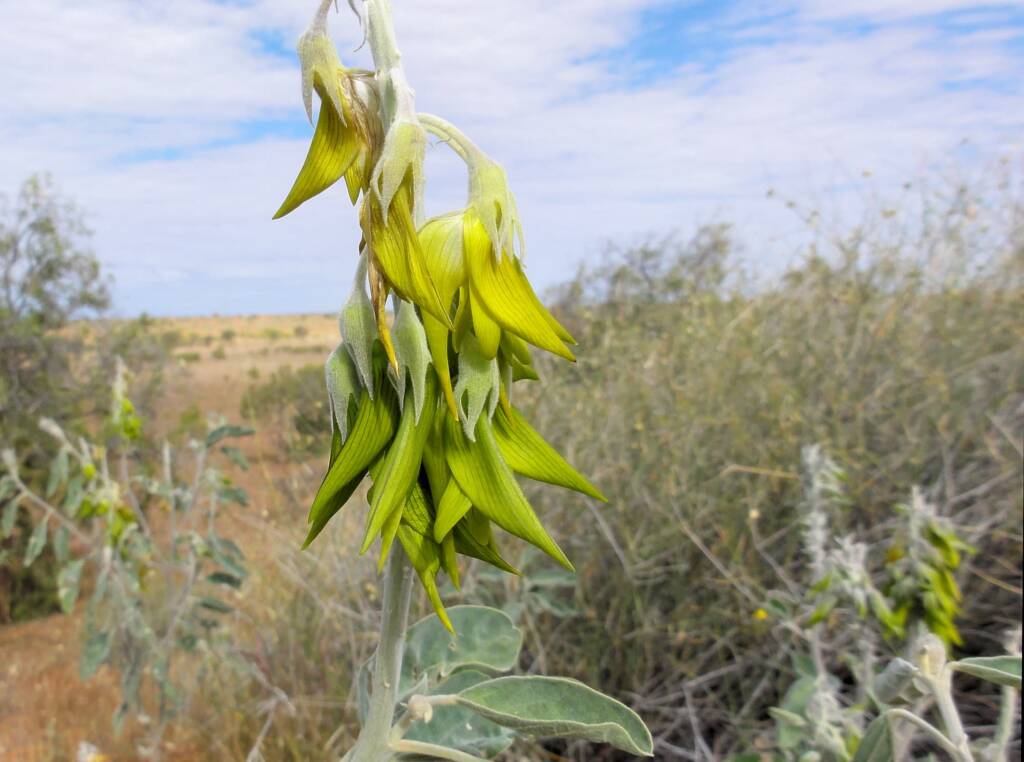
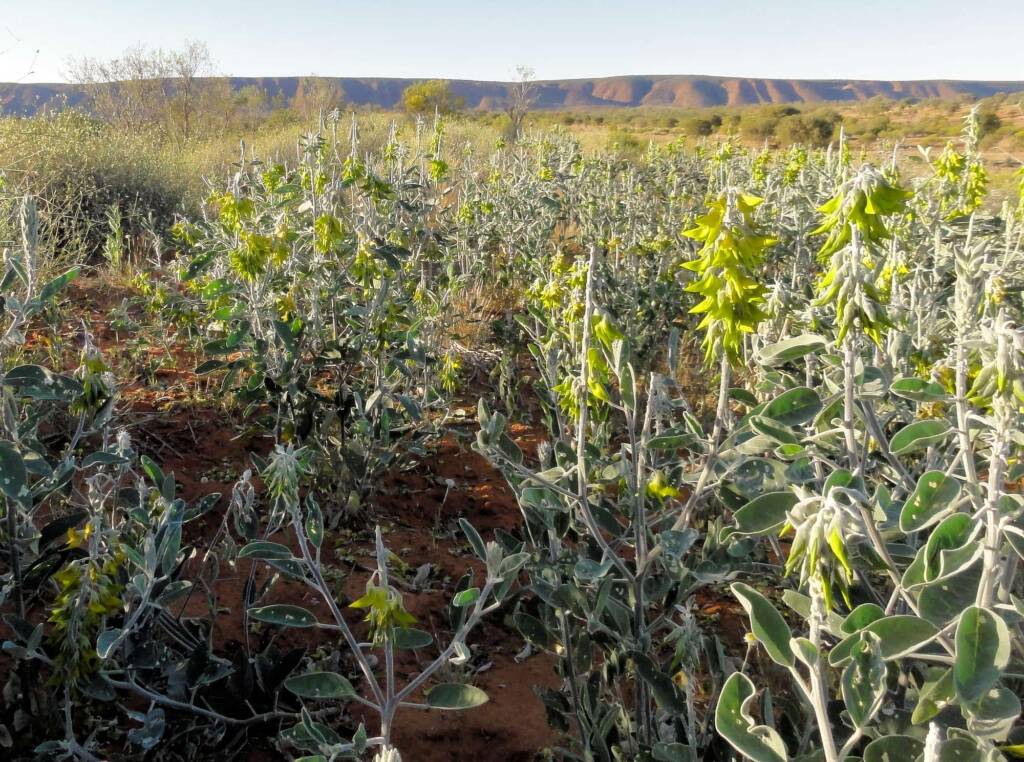
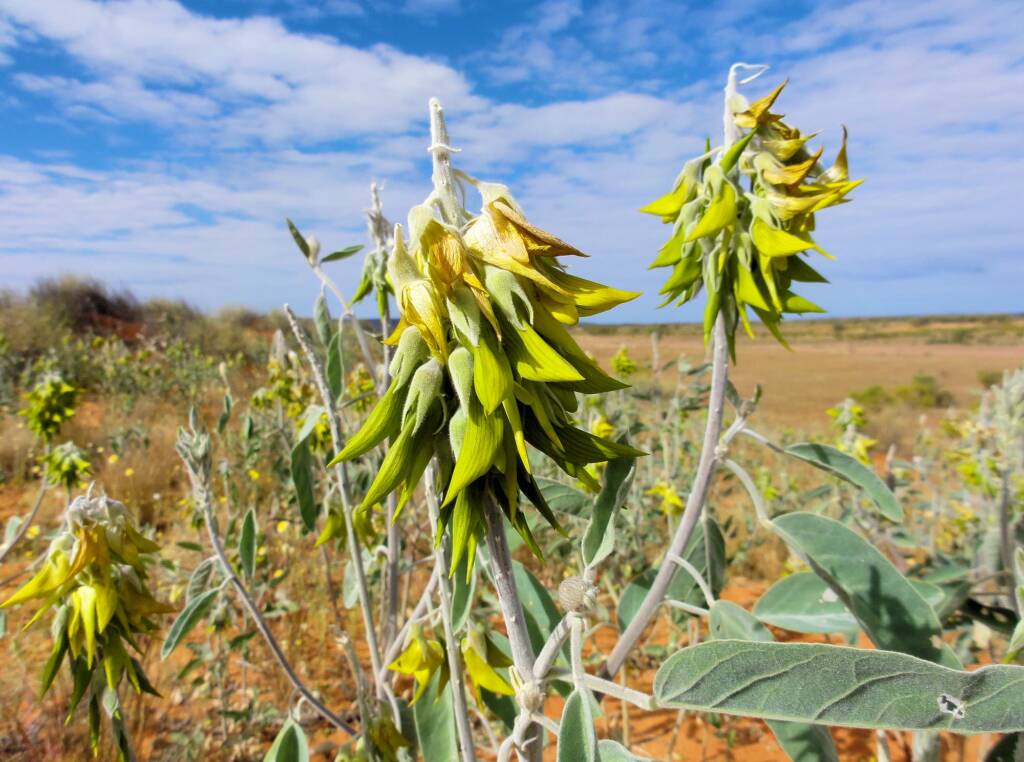



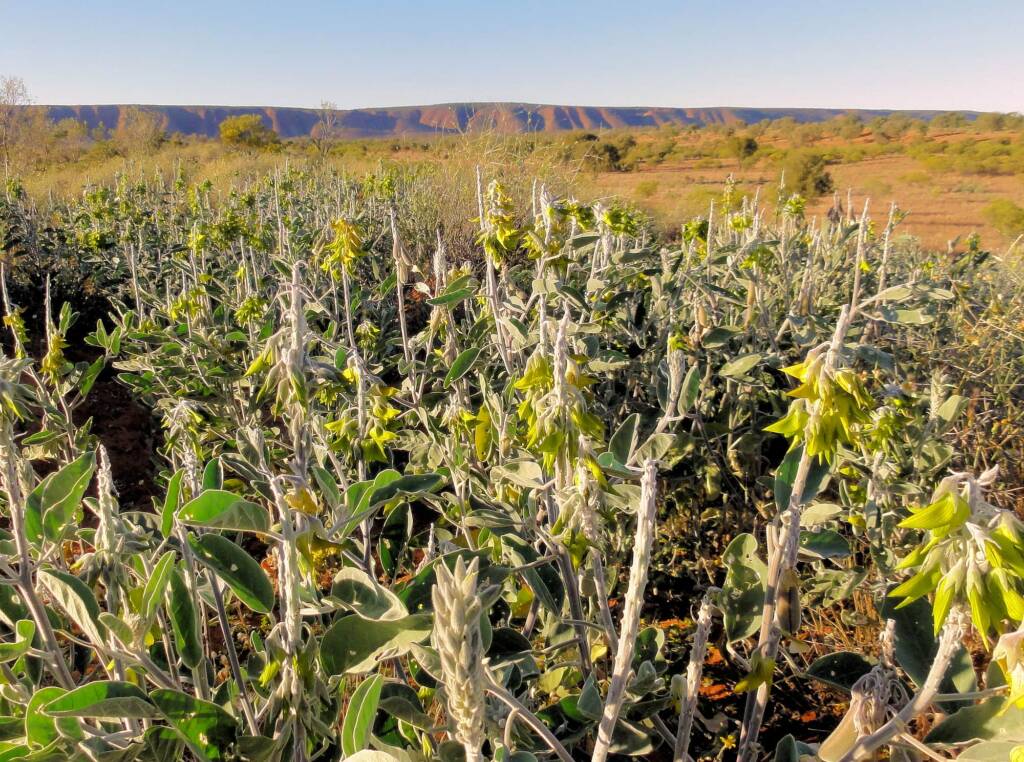
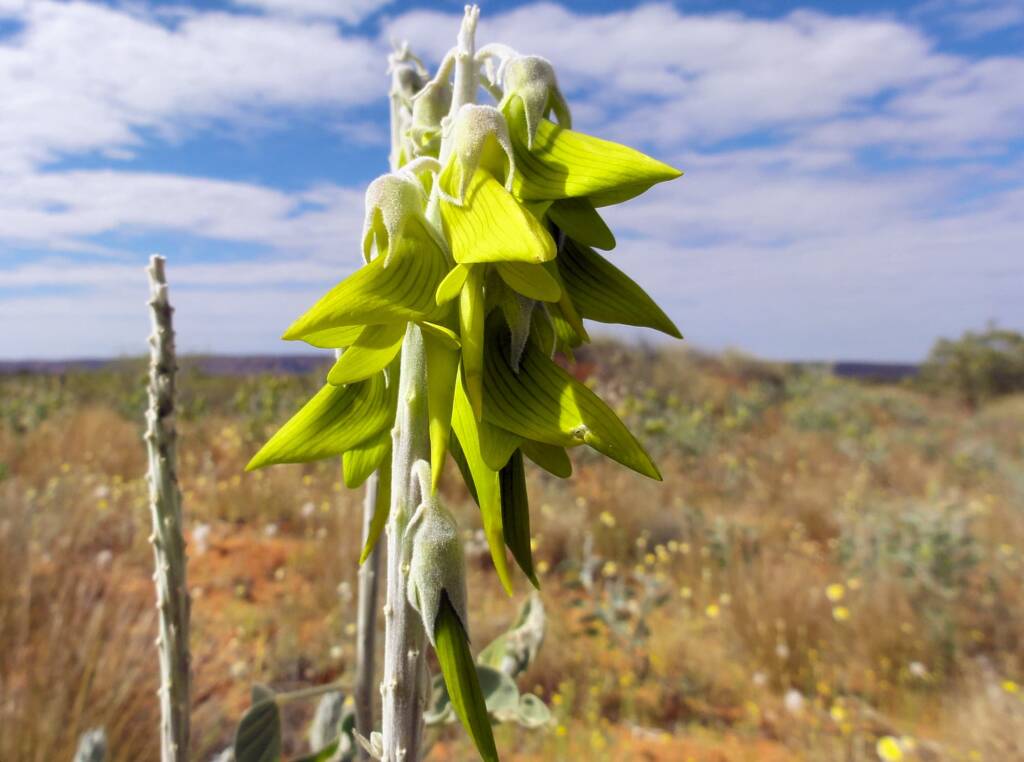
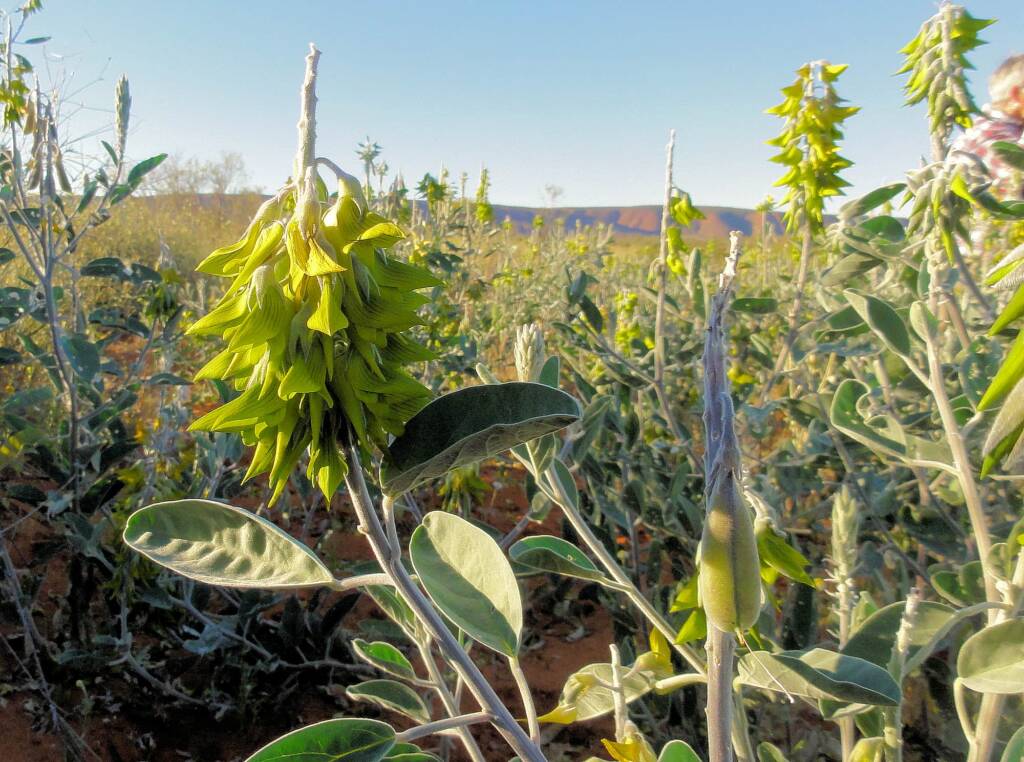
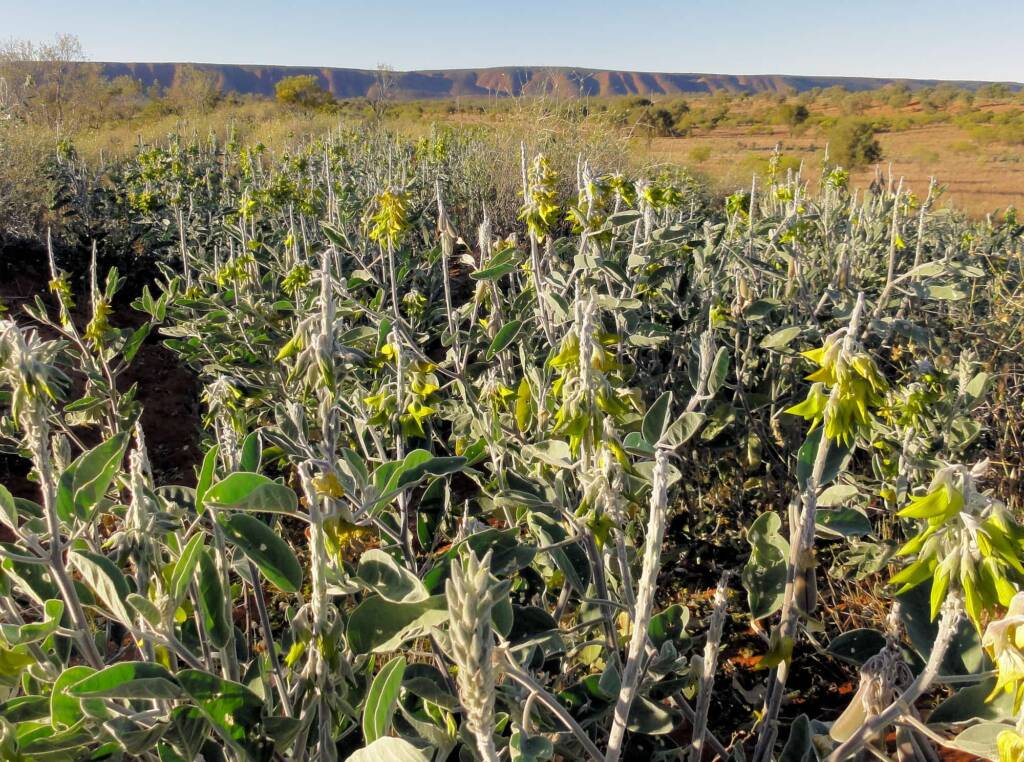
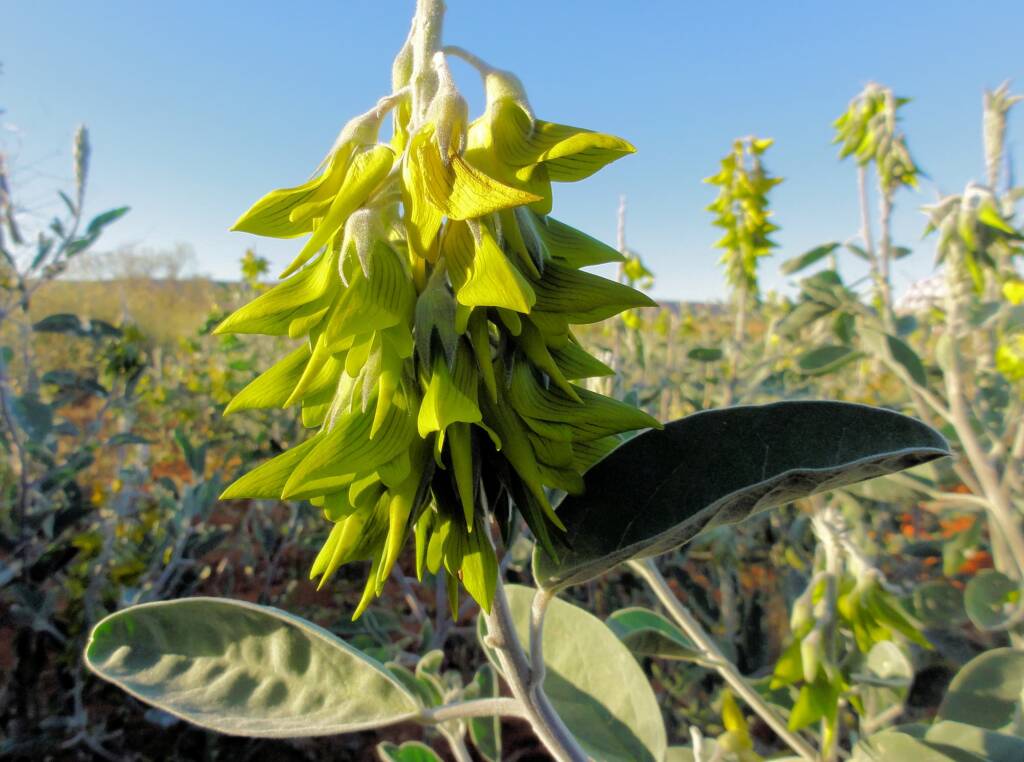
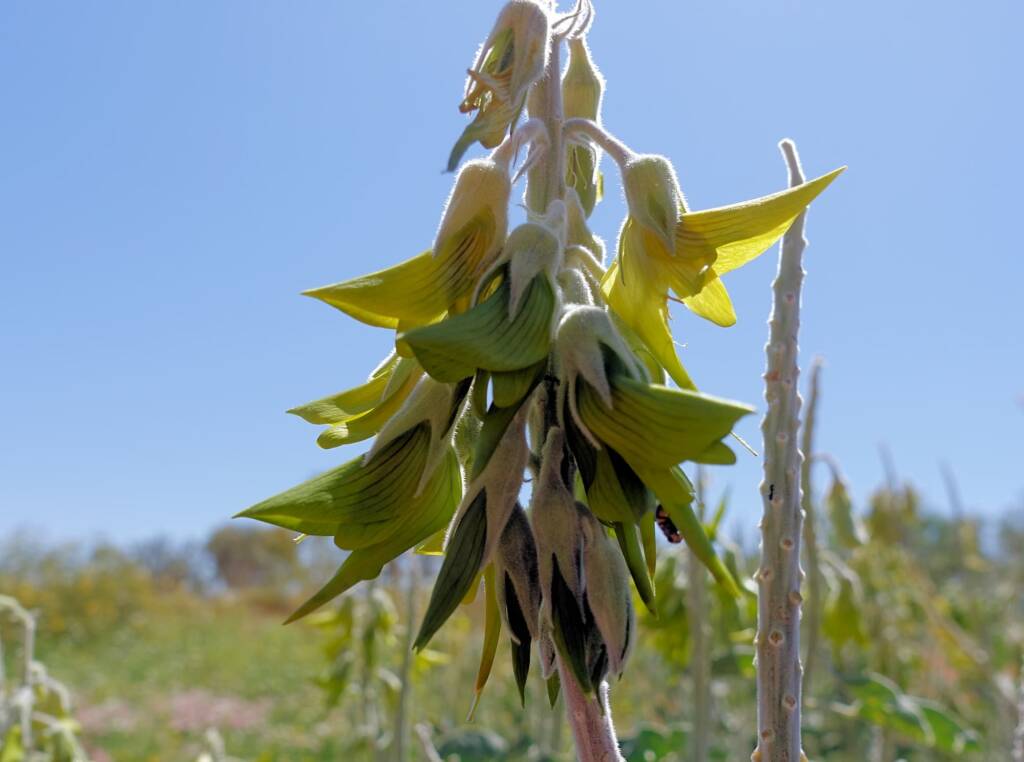
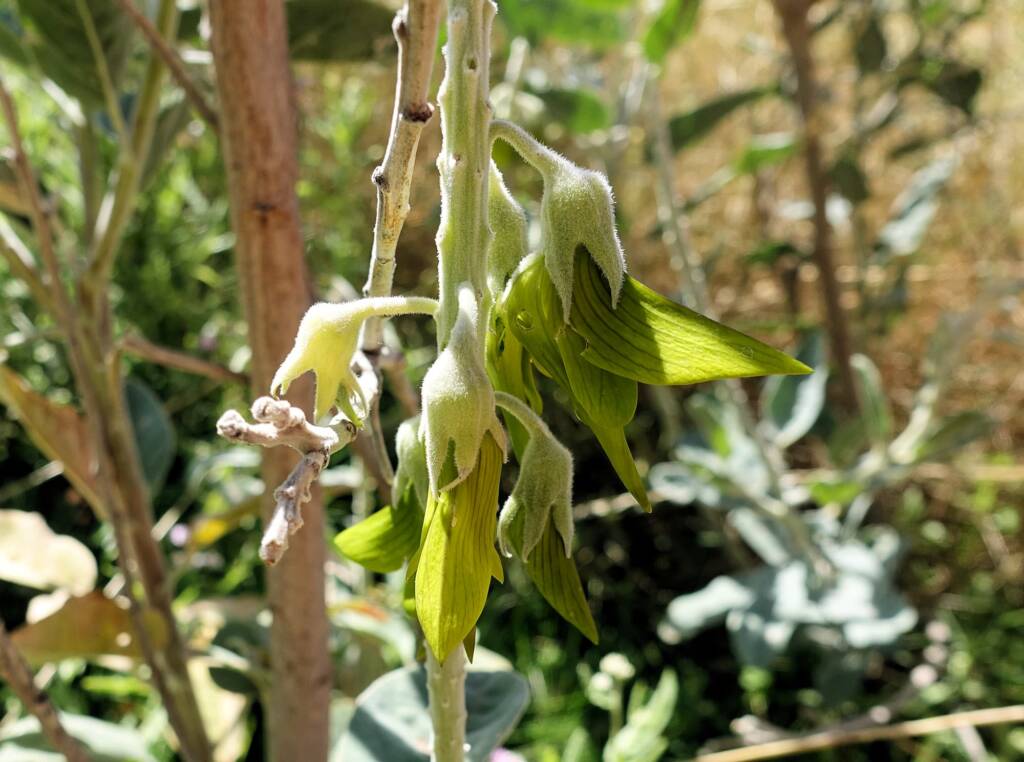
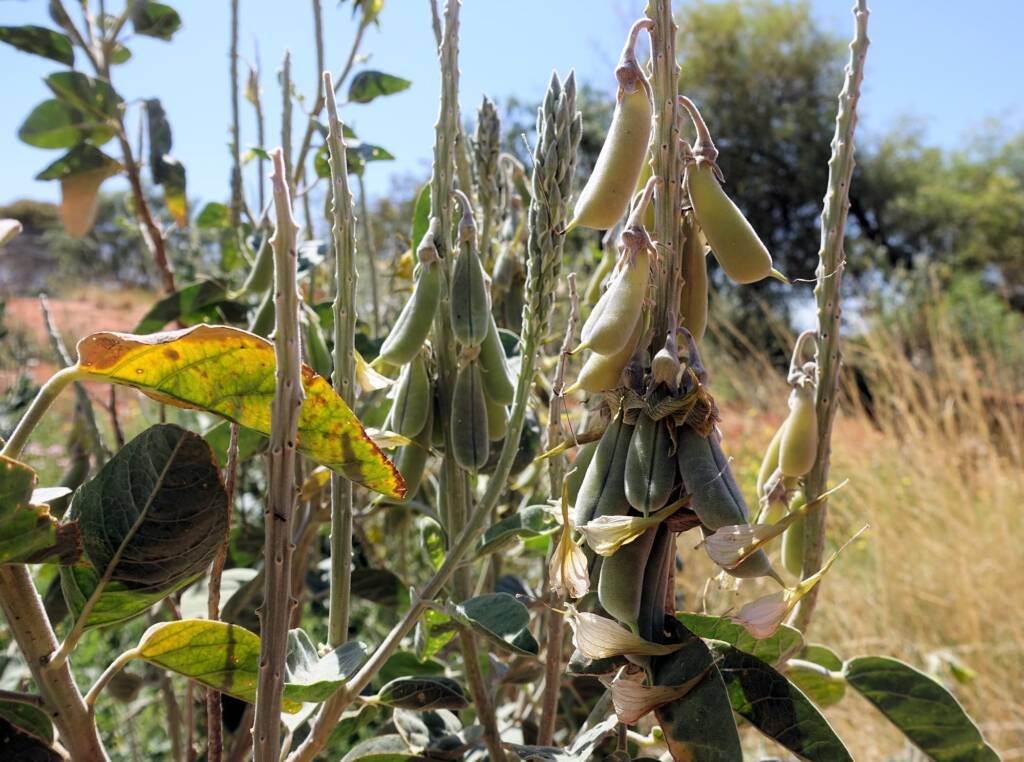
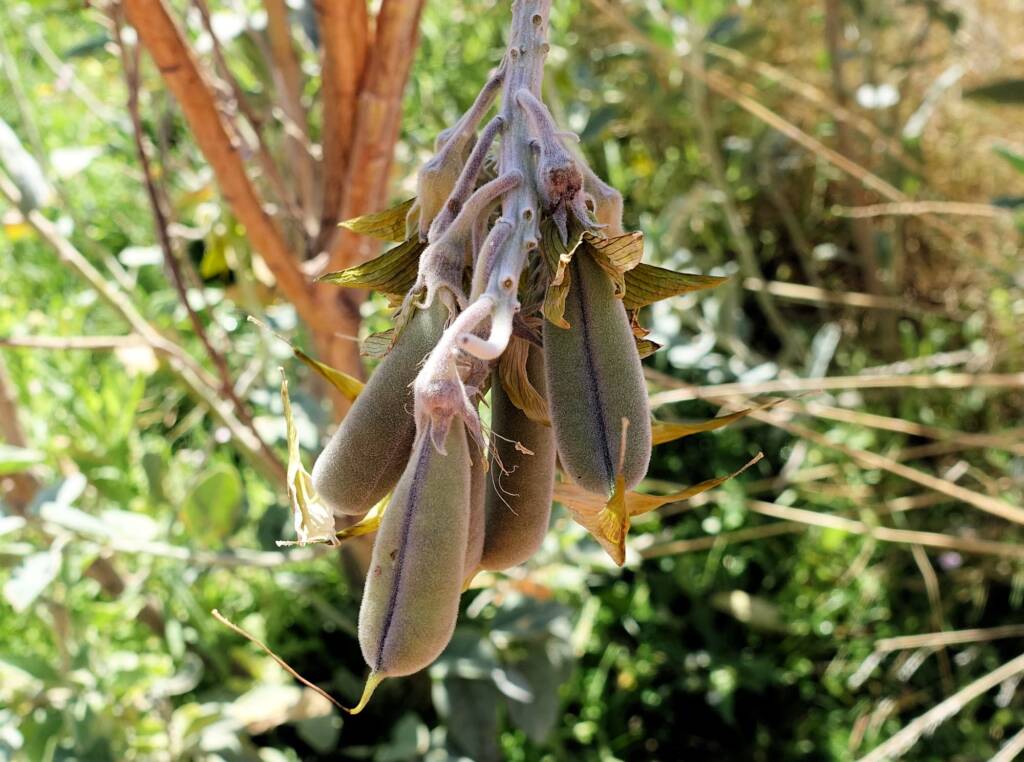
Check out our info on the Alice Springs Desert Park Flora.
- Scientific classification
- Kingdom: Plantae
- Phylum: Tracheophyta
- Subphylum: Angiospermae
- Class: Magnoliopsida
- Order: Fabales
- Family: Fabaceae
- Subfamily: Faboideae
- Tribe: Crotalarieae
- Genus: Crotalaria
- Species: Crotalaria cunninghamii
Footnote & References
- Peter Latz, Bushfires and Bushtucker Aboriginal Plant Use in Central Australia, IAD Press, Alice Springs, 2004, Crotalaria cunninghamii, p153
- Anne Urban, Wildflowers & Plants of Inland Australia, 2001, Crotalaria cunninghamii, p90
FloraFlora in Australia Flora Index Acacia Anigozanthos (Kangaroo Paws) Annual Yellowtop Apium prostratum subsp. prostratum var filiforme Apple Bush (Pterocaulon sphacelatum) Australian Bluebell Australian Gossypium Banksia Batswing Coral Tree Billy Buttons Birdsville Indigo Blue Pincushion Bush Banana Callistemon Callitris drummondii (Drummond’s Cypress Pine) Calothamnus quadrifidus Cape Honeysuckle Cassia fistula (Golden Shower) Cattle Bush Common Heath Crotalaria Darwinia wittwerorum (Wittwer’s Mountain Bell) Daviesia oppositifolia (Rattle-pea) Desert Oaks Drumsticks Eremophila Eucalyptus Ficus Flannel Cudweed (Actinobole uliginosum) Georges Indigo Goatshead Burr (Sclerolaena bicornis) Golden Everlasting Goodenia Gossypium Grass and Grasses Grass Trees Grevillea Grey Germander Hakea Kapok Bush (Aerva javanica) Lambertia sp Leptospermum MacDonnell Ranges Cycad Maireana scleroptera Mexican Poppy Minnie Daisy Mistletoe Family Nardoo Native Apricot Nicotiana megalosiphon subspecies sessilifolia Nuytsia floribunda Orange Spade Flower Orchidaceae Parakeelyas (Calandrinia) Pebble Bush (Stylobasium spathulatum) Perennial Yellow Top Pink Everlasting Pink Rock Wort Poached Egg Daisy Portulaca Proteaceae Ptilotus Quandong Resurrection Fern Rosy Dock Ruby Saltbush Santalum Solanum Spike Centaury Spinifex Storkbill (Erodum cygnorum) Striped Mint Bush Sturt’s Desert Pea Sturt’s Desert Rose Tall Saltbush Tangled Leschenaultia Tar Vine Tribulus eichlerianus Upside-down Plant Urodon dasyphylla Variable Daisy Waratah (Telopea) Wertabona Daisy White Cedar (Melia azedarach) White Indigo White Paper Daisy Wild Passionfruit Wild Stock Woolly-Headed Burr Daisy Woolly Bush Yellow-keeled Swainsona
Flora & FaunaFauna Flora Fauna Flora Funga Glossary Funga Related Topics Scientific Classification Backyard Wildlife Floral Emblems of Australia Wildflowers
